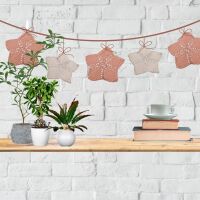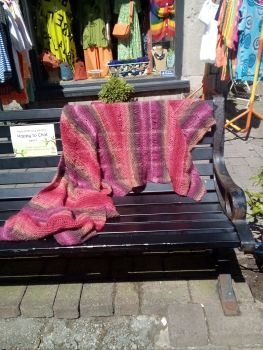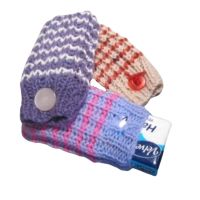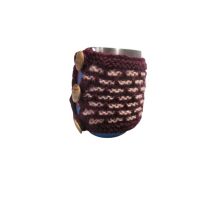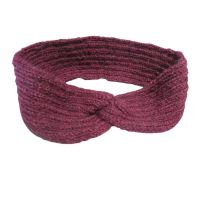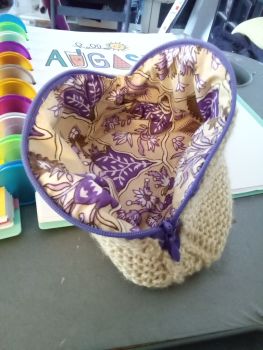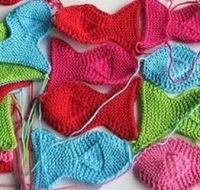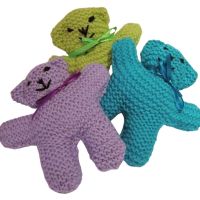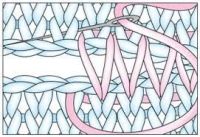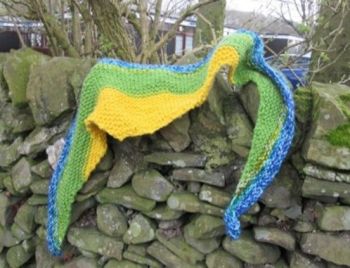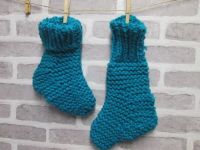 Cosy Sofa Socks
Cosy Sofa Socks
8mm knitting needles
2 x 100g ball super chunky yarn
Size 3 – 4 (Size 5 – 6) (Size 7 – 9)
Start at the cuff and cast on 20 (22, 24) stitches
Work rib row: *knit 1, purl 1 – repeat from * to end of row
Work 10 rows
Work 12 (14, 16 ) rows in a knit stitch
Heel shaping
Row 1: knit 6, turn work round, slip 1, knit 4, knit into the front then the back of the next stitch. 21 (23, 25) stitches
Row 2: knit across all stitches
Row 3: knit 6, turn work round, slip 1, knit 4, knit into the front then the back of the next stitch. 22 (24, 26) stitches
Row 4: knit across all stitches
Row 5: knit 6, turn work round, slip 1, knit 4, knit into the front then the back of the next stitch. 23 (25, 27) stitches
Row 6: knit across all stitches
Row 7: knit 6, turn work round, slip 1, knit 4, knit into the front then the back of the next stitch. 24 (26, 28) stitches
Row 8: knit across all stitches
Row 9: knit 6, turn work round, slip 1, knit 4, knit into the front then the back of the next stitch. 25 (27, 29) stitches
Row 10: knit across all stitches
Row 11: knit 6, turn work round, slip 1, knit 4, knit into the front then the back of the next stitch. 26 (28, 30) stitches
Row 12: knit across all stitches
Stop here for the small size and move on to the decrease
For the medium and large sizes – keep working
Row 13: knit 6, turn work round, slip 1, knit 4, knit into the front then the back of the next stitch. (29, 31) stitches
Row 14: knit across all stitches
Row 15: knit 6, turn work round, slip 1, knit 4, knit into the front then the back of the next stitch. (30, 32) stitches
Row 16: knit across all stitches
Stop here for the medium size and move on to the decrease
For the large size – keep working
Row 17: knit 6, turn work round, slip 1, knit 4, knit into the front then the back of the next stitch. 33 stitches
Row 18: knit across all stitches
Row 19: knit 6, turn work round, slip 1, knit 4, knit into the front then the back of the next stitch. 34 stitches
Row 20: knit across all stitches
Decrease rows
Row 1: knit 2 together, knit 5, turn work round, slip 1, knit 5. 25 (29, 33) stitches
Row 2: knit across all stitches
Row 3: knit 2 together, knit 5, turn work round, slip 1, knit 5. 24 (28, 32) stitches
Row 4: knit across all stitches
Row 5: knit 2 together, knit 5, turn work round, slip 1, knit 5. 23 (27, 31) stitches
Row 6: knit across all stitches
Row 7: knit 2 together, knit 5, turn work round, slip 1, knit 5. 22 (26, 30) stitches
Row 8: knit across all stitches
Stop here for the small size
Keep decreasing for the medium and large sizes
Row 9: knit 2 together, knit 5, turn work round, slip 1, knit 5. (25, 29) stitches
Row 10: knit across all stitches
Row 11: knit 2 together, knit 5, turn work round, slip 1, knit 5. (24, 28) stitches
Row 12: knit across all stitches
Stop here for the medium size
Keep decreasing for the large size
Row 13: knit 2 together, knit 5, turn work round, slip 1, knit 5. (27) stitches
Row 14: knit across all stitches
Row 15: knit 2 together, knit 5, turn work round, slip 1, knit 5. (26) stitches
Row 16: knit across all stitches
Foot
Row 1: knit 2 together, knit 18 (20, 22), knit 2 together. 20 (22, 24) stitches
Row 2: knit across all stitches
Row 3: knit across all stitches
Row 4: knit 2 together, knit 16 (18, 20), knit 2 together. 18 (20, 22) stitches
Row 5: knit across all stitches
Row 6: knit across all stitches
Row 7: knit 2 together, knit 14 (16, 18), knit 2 together. 16 (18, 20) stitches
Stop here for the small size – shape the toe
Keep decreasing for the medium and large sizes
Row 8: knit across all stitches
Row 9: knit across all stitches
Row 10: knit 2 together, knit (14, 16), knit 2 together. (16, 18) stitches
Stop here for the medium size – shape the toe
Row 11: knit across all stitches
Row 12: knit across all stitches
Keep decreasing for the large size
Row 13: knit 2 together, knit (14), knit 2 together. (16) stitches – shape the toe
Shape the toe
Work 4 rows in a knit stitch
Row 5: knit 2 stitches together across the row. 8 stitches
Row 5: knit 2 stitches together across the row. 4 stitches
Leave a 60cm tail and cut the yarn
Thread the yarn onto a very large eye tapestry needle
Loop the needle through the stitches – pull tight – weave the yarn round the toe again and secure
Sew up the back of the sock with mattress stitch and finish off the yarn
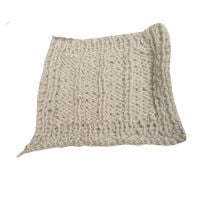 Cast on 29 stitches.
Cast on 29 stitches.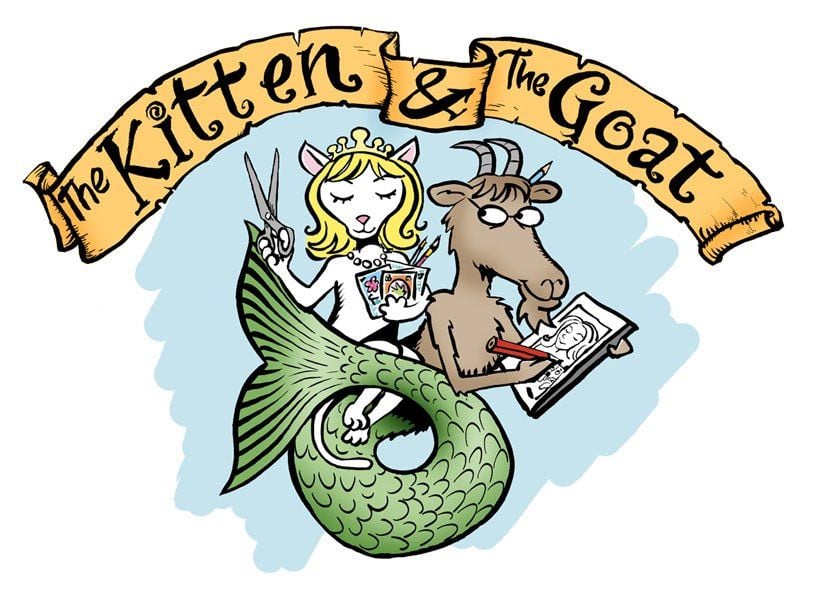
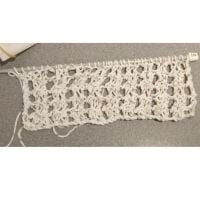
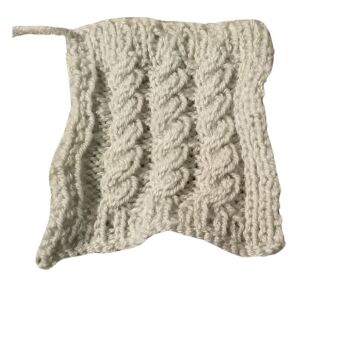
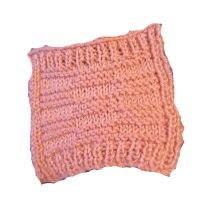 Garter Stitch Blocks
Garter Stitch Blocks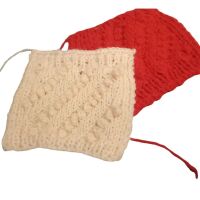
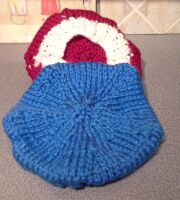
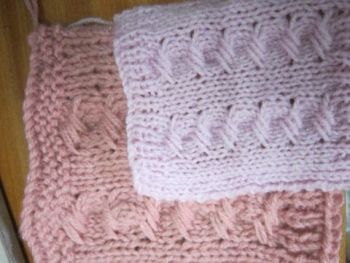 Long Cross Stitch Square
Long Cross Stitch Square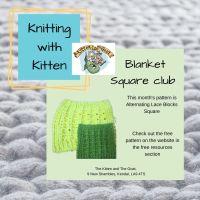 You will need;
You will need;